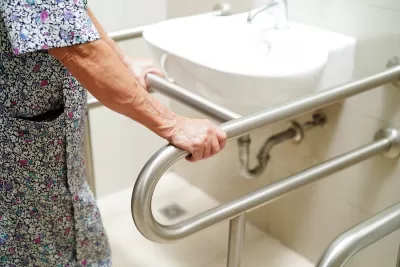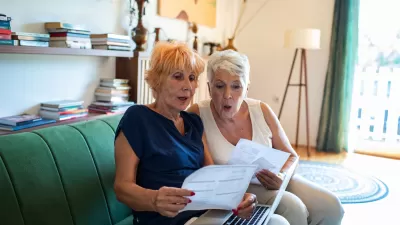While many people over 65 would prefer to stay in their homes and communities, high housing costs and a lack of accessible infrastructure make it difficult.

Housing policies and community infrastructure in many U.S. cities are not keeping up with demand as Americans age, according to a survey conducted by the AARP. Three-quarters of survey respondents said they wanted to remain in their current homes, explains Ysabelle Kempe in Smart Cities Dive.
As the baby boomer generation gets older, the number of adults over 65 is higher than ever. “Meanwhile, housing and care are becoming less affordable and accessible for older adults, defined as those who are at least 65 years old, according to a 2023 report from Harvard University’s Joint Center for Housing Studies.” Based on the AARP survey, 11.2 million Americans over 65 spend more than 30 percent of their income on housing. The accessibility — or lack thereof — of homes is also an issue for many older Americans who can’t afford to retrofit their homes or who live in rental housing.
To address these needs, the AARP recommends that policymakers support and expand rental assistance programs such as the Housing Choice Voucher program, support zoning reforms that encourage missing middle housing types like accessory dwelling units, and adopt Complete Streets policies that make cities more walkable and livable at any age.
FULL STORY: Housing policies must improve to meet older adults’ needs, AARP says

Trump Administration Could Effectively End Housing Voucher Program
Federal officials are eyeing major cuts to the Section 8 program that helps millions of low-income households pay rent.

Planetizen Federal Action Tracker
A weekly monitor of how Trump’s orders and actions are impacting planners and planning in America.

The 120 Year Old Tiny Home Villages That Sheltered San Francisco’s Earthquake Refugees
More than a century ago, San Francisco mobilized to house thousands of residents displaced by the 1906 earthquake. Could their strategy offer a model for the present?

Alabama School Forestry Initiative Brings Trees to Schoolyards
Trees can improve physical and mental health for students and commnity members.

NYC Outdoor Dining Could Get a Re-Do
The city council is considering making the al fresco dining program year-round to address cost concerns from small businesses.

HSR Reaches Key Settlement in Northern California City
The state’s high-speed rail authority reached an agreement with Millbrae, a key city on the train’s proposed route to San Francisco.
Urban Design for Planners 1: Software Tools
This six-course series explores essential urban design concepts using open source software and equips planners with the tools they need to participate fully in the urban design process.
Planning for Universal Design
Learn the tools for implementing Universal Design in planning regulations.
Ada County Highway District
Clanton & Associates, Inc.
Jessamine County Fiscal Court
Institute for Housing and Urban Development Studies (IHS)
City of Grandview
Harvard GSD Executive Education
Toledo-Lucas County Plan Commissions
Salt Lake City
NYU Wagner Graduate School of Public Service





























